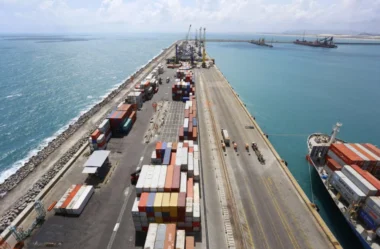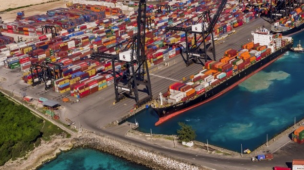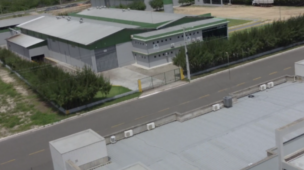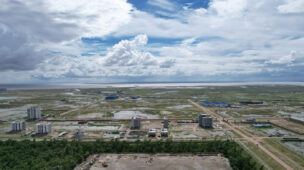Tempo de leitura: 6 minutos
| Julien Gourdon & Simon Azuelos | Across Africa, Special Economic Zones (SEZs) have become a central feature of industrial policy. The pitch is compelling: areas within a nation’s borders, in which streamlined regulations, tax incentives, and dedicated infrastructure can help kick-start industrialization. In 1970 Mauritius became the first African country to establish a SEZ; as of 2023, more than 230 zones have been established in 43 African countries to attract investment, boost exports, and create jobs.
SEZs are not one-size-fits-all. Export Processing Zones offer customs and fiscal incentives focused on export-oriented manufacturing. Free Trade Zones typically refer to large areas with incentives aimed at facilitating the import and re-export of goods. Specialized Zones offer deep incentives for a single sector, while Diversified Zones support multiple industries. Economic Revitalization Projects, meanwhile, target distressed areas through tax incentives.
But despite the promise of SEZs, their record in Africa has been mixed. Compared with Asia, for example, they have underperformed. While China’s early SEZs such as Shenzhen became engines of industrial transformation thanks to strong state support, coherent national strategies, and deep linkages with domestic firms, most African zones have struggled to generate similar spillovers into the wider economy.
So can SEZs deliver on their promise of structural transformation for African economies? A new study by the French Development Agency (AFD) drawing on datasets from over 230 African SEZs shows that while they have not always lived up to expectations, they are evolving — and could become powerful tools for inclusive growth if governance and design improve.
The good: What SEZs have achieved
The AFD study finds encouraging results on export performance. Countries with SEZs tend to produce more technologically sophisticated goods and enable access to new international markets, helping countries move beyond raw commodities and into higher value-added sectors. For example, since the late 2000s, Morocco’s Tanger Med has become a hub for automotive exports linked to European supply chains. Ethiopia’s industrial parks, launched in the mid-2010s, have opened up opportunities in textiles.
At the household level, the evidence is equally striking. Using geospatial data from 10 African countries, researchers find that households living within 10 kilometres of SEZs enjoy measurable gains in wealth, better access to electricity and sanitation, and improved housing quality. These benefits are broadly shared across income groups, suggesting that SEZs can enhance local welfare without worsening inequality. For women, SEZs are associated with occupational shifts away from subsistence agriculture and increased educational attainment. All of this suggests that SEZs are not just abstract policy tools: they are reshaping people’s daily lives, especially in areas where zones are industrial or mixed-use rather than service-only.
The bad: Where SEZs fall short
Still, SEZs have clear limitations. They tend to support the export of existing products to new markets, while their contribution to export diversification — creating entirely new products — remains limited. Equally, SEZs are not well integrated into regional value chains. Many zones remain oriented toward extra-continental trade, with limited spillover into neighbouring African economies.
Job creation has also been uneven. Africa’s SEZs often generate fewer jobs than expected, partly because many are capital-intensive. Female employment, in particular, remains constrained. And while some zones spur dynamic local economies, others risk becoming isolated enclaves with little linkage to domestic firms.
Why some zones succeed where others fail
One of the clearest lessons from the research is that governance and incentives matter. SEZs governed under private or public-private partnership (PPP) arrangements tend to outperform those run solely by public administrations. Similarly, zones with strong, targeted incentives — such as tax breaks tied to job creation, training programs, or technology transfer — achieve better export outcomes than traditional free trade zones, which typically only provide customs exemptions and duty-free imports without supporting industrial upgrading.
In other words, building infrastructure and offering tax breaks is not enough. For SEZ’s to be successful, they must be embedded in broader economic strategies, provide adequate capital, expertise, and innovation, and create meaningful linkages with domestic enterprises.
Toward a new generation of African SEZs
The future of Africa’s SEZs will depend on whether they can transition from isolated policy enclaves to integrated engines of transformation. Encouragingly, a new generation of zones is beginning to take shape, aligning with broader continental and global priorities. Three trends stand out:
Leveraging the African Continental Free Trade Area (AfCFTA) for regional integration. Some governments are actively reorienting their SEZs to serve regional rather than exclusively overseas markets. For example, Kenya and Rwanda are piloting initiatives to harmonize customs procedures and logistics hubs under the AfCFTA framework, laying the groundwork for cross-border value chains in agribusiness and light manufacturing.
Driving greener and more inclusive industrialisation. National agencies and zone developers are embedding environmental, social, and governance (ESG) principles into zone design and management. Morocco’s Tanger Med Industrial Zone, for instance, has invested in renewable energy and waste reduction programs, while Kenya’s Naivasha Industrial Park includes dedicated facilities to support micro and small enterprises, helping them connect to larger supply chains.
Integrating SEZs into national strategies and infrastructure planning. Several countries are linking zone development to major public infrastructure projects and long-term industrial strategies. Egypt’s Suez Canal Economic Zone, for example, is part of a national logistics corridor, while Ethiopia’s industrial parks are connected to the country’s rail and energy networks.
These examples suggest that African SEZs are gradually evolving. When governments align zone governance and incentives with regional trade, sustainability, and broader economic planning, SEZs can become true catalysts for transformation.
Policy priorities going forward
1. Improve governance: Strengthen key agencies (investment promotion, customs, regulators). Involve private operators through PPPs, with clear accountability between governments, local authorities, and zone developers to prevent rent-seeking during the establishment of SEZs.
2. Design smarter incentives: Move beyond generic tax breaks by tying benefits to job creation, technology transfer, and environmental targets. Support skills training and local supplier integration.
3. Embed SEZs in wider strategies: Align zones with national plans, AfCFTA goals, and ESG standards to drive regional integration and sustainable growth.
Special Economic Zones are not silver bullets for Africa. Their record is uneven, and their design must evolve. But new evidence from across the continent suggests that, when well governed, strategically designed, and aligned with inclusive growth objectives, SEZs can drive real progress in export competitiveness and household welfare. Africa’s challenge is not whether to use SEZs, but how to make them work better — turning them from isolated enclaves into drivers of sustainable and inclusive development.
Fonte: OECD | Foto: Reprodução







Os comentários foram encerrados, mas trackbacks e pingbacks estão abertos.